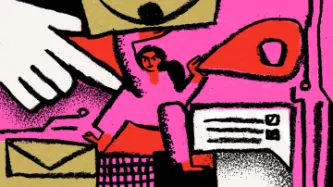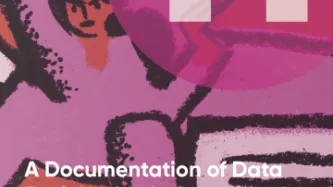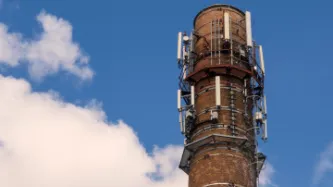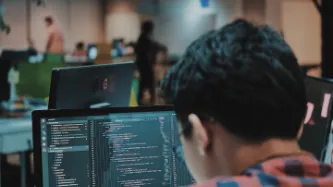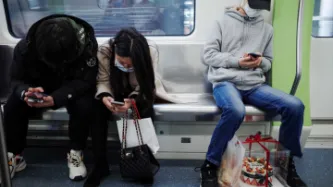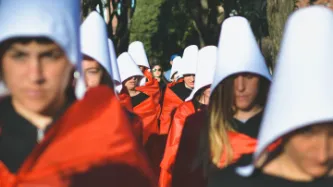Search
Content type: Examples
India's COVID-19 tracker app, Aarogya Setu, was downloaded 50 million times in the first 13 days it was available. Developed by the National Informatics Centre a subsidiary of the Ministry of Electronics and IT, the app is available on both Android and iOS smartphones, and uses GPS and Bluetooth to provide information on whether the phone has been near an infected person. Users provide a mobile number, health status, and other credentials, and must keep both location services and Bluetooth…
Content type: Examples
Montreal police have launched an online system to enable residents to report suspicious activity such as group gatherings after police officers noticed significant crowding in certain areas of the city. Both the Montreal police and the province's Sureté du Québec can hand out an on-the-spot $1,000 ticket for both indoor and outdoor illegal gatherings. Travellers returning to Canada who refuse to comply with self-isolation requirements can be fined up to $200,000 and up to six months in prison.…
Content type: Examples
Since the Azarebaijani government imposed the lockdown to slow the spread of COVID-19 the authorities have sentenced at least six activists and a pro-opposition journalist to detention for between ten and 30 days on charges including breaking lockdown rules or disobeying police orders. Almost all of those arrested had criticised the conditions in government-run quarantine centres or the insufficient compensation the government has provided to people struggling financially due to the…
Content type: Examples
On April 5, Azerbaijan tightened the quarantine regime imposed on March 24 to require residents under 65 to receive permission via an SMS message before leaving their homes. Only three reasons are allowed: to visit the doctor, to visit a pharmacy, shop, bank, or post office, or attend a relative's funeral. Sending the message is free; it must include the resident's personal ID number and their reason for leaving the house. Permits grant a two-hour window, and residents can only have one per day…
Content type: Examples
The Australian government's planned contact tracing app will reportedly be based on Singapore's TraceTogether, which relies on Bluetooth connections to detect other phones in range and log the results, so that if a phone user tests positive for COVID-19 and consents their close contacts can be alerted by uploading the logs to a centralised server. A second app, ConTrace, is in development for the Public Transport Information and Priority System; the prototype requires no personal information…
Content type: Examples
New versions of drones that currently issue audio warnings reminding people in Elizabeth, New Jersey to observe social distancing guidelines will incorporate sensors and fever-detecting cameras that will monitor if people are sick or failing to social distance on the trails and in the parks of Meriden, Connecticut, according to the commercial drone company Draganfly, which claims the cameras can also detect sneezing and heart and respiratory rates. The company expects to conduct pilot…
Content type: Examples
In early April, police in a UK park violated their own social distancing guidelines to order ITN journalist Michael Segalov to go home when he began filming the same police appearing to harass a distressed woman. Segalov's solicitors at ITN followed up by filing a letter of complaint demanding an investigation and a public apology.
Source: https://www.vice.com/en_uk/article/epgegj/police-power-trip-coronavirus-lockdown
Writer: Simon Childs
Publication: Vice
Content type: Examples
The Venezuelan government has ramped up quarantine enforcement in the Catia barrio in Caracas by issuing permits that allow only one family member out at a time and only before noon, and setting up 40 checkpoints. Many residents had flouted regulations in the barrio, home to 400,000 of Venezuela's poorest inhabitants; residents reported that many families had spent weeks without running water and without receiving government handouts of food.
https://in.reuters.com/article/us-health-coronavirus…
Content type: Examples
Because many people were still circulating on the streets despite the lockdown order issued on March 25, Panama expanded its social distancing measures by implementing gender-based quarantine schedules from April 1 to April 12: men may leave their homes to get necessities on Mondays, Wednesdays, and Fridays, while women may leave on Tuesdays, Thursdays, and Saturdays. No one is allowed out on Sundays or between 5pm and 5am on any day. In the week before the new order was issued, more than 2,000…
Content type: Examples
Palantir and the British AI start-up Faculty are data-mining large volumes of confidential UK patient information to consolidate government databases and build predictive computer models under contract to NHSx, the digital transformation arm of the UK's National Health Service. NHSx said the goal is to give ministers and officials real-time information to show where demand is rising and equipment needs to be deployed, and that the companies involved do not control the data and are not allowed…
Content type: Press release
PI's new report documents 10 tactics that are being developed and deployed to delay or curtail access to reproductive healthcare globally. Especially given the current crisis, as digital services become even more important, we hope this report will highlight how those opposed to reproductive rights are actively developing technical tools to delay or curtail access. A downloadable multi-media asset is attached.
Examples of tech being developed:
Developing digital dossiers about those…
Content type: Long Read
The organised opposition to sexual and reproductive rights has gone digital. Data exploitative tech is being developed that is capable of obtaining vast amounts of intimate information about people’s reproductive health, and delaying or curtailing access to reproductive healthcare.
Technology provides incredible opportunities to democratise access to reproductive health information, services, and care. It can play a vital role in protecting the lives of those needing sexual and reproductive…
Content type: Explainer
In a scramble to track, and thereby stem the flow of new cases of Covid-19, Governments around the world are rushing to track the locations of their populace. One way to do this is to leverage the metadata held by mobile service providers (telecommunications companies - "Telcos" - such as Hutchison 3 (Also known as Three), Telefonica (Also known as O2), Vodafone, and Orange) in order to track the movements of a population, as seen in Italy, Germany and Austria, and with the European Commission…
Content type: News & Analysis
A few weeks ago, its name would probably have been unknown to you. Amidst the covid-19 crisis and the lockdown it caused, Zoom has suddenly become the go-to tool for video chat and conference calling, whether it’s a business meeting, a drink with friends, or a much needed moment with your family. This intense rise in use has been financially good to the company, but it also came with a hefty toll on its image and serious scrutiny on its privacy and security practices.
While Zoom already had a…
Content type: Case Study
Over the past decade targeted advertisement has become exponentially more invasive. To enable targeted advertisement, massive amounts of data about individuals are collected, shared and processed often without their knowledge or consent. This information about us is then used to profile us and micro-target us to sell us products or influence our views.
This is a significant intrusion to our privacy inevitably affects our perogative not to reveal our thoughts; not to have our thoughts…
Content type: Video
PI's Reproductive Rights and Privacy Project speaks with Nandini Archer from the 50/50 Project at Open Democracy about how Heartbeat International is coordinating and promoting misleading health information globally information through it’s international affiliates.
More here: https://privacyinternational.org/taxonomy/term/677
Content type: Long Read
‘Let’s build an app for that’ has become the response to so many things. It’s no surprise it’s happening now.
Apps are notorious for their lack of security and privacy safeguards, exploiting people’s data and devices. Now we’re being asked to trust governments with their proposed apps -- of which there are many. These are the very same governments who have been keen to exploit data in the past. For instance, PI currently has four outstanding legal cases arising from the last times governments…
Content type: Examples
A BBC article captures the story of a student living in Taiwan under quarantine, who reports that when his battery on his phone ran out, within an hour four different local administrative units contacted him; and a patrol was dispatched to verify his location; and a text was sent that the government had lost track of him and warned him of potential arrest for breaking quarantine.
According to the BBC report, Taiwan uses mobile signals to triangulate location of people under quarantine (…
Content type: Video
PI's Reproductive Rights and Privacy Project speaks with Dr. Subasri Narasimhan and Dr. Dabney Evans from the Rollins School of Public Health at Emory University in the US about their paper which documents how misleading health information about reproductive health can flow into policy and legislative debates.
More here: https://privacyinternational.org/taxonomy/term/677
A narrative analysis of anti-abortion testimony and legislative debate related to Georgia’s fetal “heartbeat”…
Content type: Video
PI's Reproductive Rights and Privacy Project speaks with Ruth Taylor, the CEO of the UK-based charity Abortion Support Network about how opposition groups are using misinformation to delay people from accessing safe abortion care.
More here: https://privacyinternational.org/taxonomy/term/677
Content type: Video
PI's Reproductive Rights and Privacy Project speaks with Tasneem Mewa and Ambika Tandon from the Center for Internet and Society about data exploitation in reproductive rights in India.
This podcast is part of a special series from PI's Reproductive Rights and Privacy Project.
The series comes out on the last Monday of every month.
You can listen and subscribe to the podcast where ever you normally find your podcasts:
Spotify
Apple podcasts
Google podcasts
Castbox
Overcast
Pocket…
Content type: Long Read
On 15th April Margaret Atwood, author of the Handmaid's Tale, gave an interview to BBC Radio 5 Live where she commented that ‘people may be making arrangements that aren’t too pleasant, but it’s not a deliberate totalitarianism’. You can read more about the interview in the Guardian.
While we agree with Margaret Atwood that we are not necessarily entering an era of "deliberate totalitarianism" we have written the following open letter (download link at the bottom of the page) to her as a ‘…
Content type: Examples
Oura Rings, which measure body temperature and blood pulse volume to determine heart and respiratory rate and track sleep, are the subject of a national study being jointly conducted by the West Virginia University Rockefeller Neuroscience Institute, WVU Medicine, and Oura Health in hopes it can be used to predict infection and identify infected health workers before they become symptomatic. The rings and their accompanying smartphone app have been issued to physicians, nurses, and other…
Content type: Examples
The Department of Health in the US state of Kansas is tracking residents' locations via a platform called Unacast, which compares aggregated GPS mobile phone data from before and after the implementation of social distancing and grades each county on its compliance. As of April 1, 45 of 105 Kansas counties had received an F rating, and the state as a whole had managed a C. Unacast says the data it has access to is updated every other day and publishes updated ratings on all 50 US states.…
Content type: Examples
The city of Moscow is planning to use smartphone geolocation functions to track foreign tourists' movements through the city to prevent outbreaks of COVID-19 after Russia reopens its borders. Moscow accounts for two-thirds of all cases in the country. Moscow City Hall is considering a system that would provide daily updates on tourists' movements using their SIM card data and show when residents come into contact with them; it is already buying location data from Russia's three biggest telecom…
Content type: Examples
On April 2 Peruvian president Martín Vizcarra issued a controversial rule that men and women must observe quarantine on different days: men may leave their homes on Mondays, Wednesdays, and Fridays, while women may leave only on Tuesdays, Thursdays, and Saturdays. No one is allowed out on Sundays. Some critics are concerned that the plan will lead to disproportionate harassment of LGBTQ+ people because the police are instructed to stop people based on gender presentation. The purpose, the…
Content type: Examples
An Excel file containing complete data pertaining to patients tested for coronavirus in the cities Quetta and Taftan in the the Balochistan region of Pakistan has been circulating in WhatsApp groups about Balochistan. The file contains information such as names, phone numbers, age address and other identifying information for the patients. The leaked data puts the patients at risk of personal harm and social stigma, even after recovery. Balochistan government officials say the data leaked…
Content type: Examples
The Norwegian contact tracing app, Infection Stop, relies on a centralised database to store users' GPS locations for 30 days, like its Chinese counterpart. Sumula, the company that developed the app, claims is necessary because of technical limitations in Apple's smartphone operating system iOS. Simula has rejected using Bluetooth, like Singapore's TraceTogether, because to work on Apple's iPhones the tracker app would have to be in the forefront in order to be able to use Bluetooth to send,…
Content type: Examples
In order to enforce mandatory 14-day quarantine orders, Kenyan authorities have been tracking mobile phones of people suspected to have COVID-19. Also in Kenya, police enforcement efforts have led to several deaths: three died of injuries from being beaten, one, a 13-year-old boy, was hit by a bullet.
Source: https://www.bbc.co.uk/news/world-africa-52214740
Writer: Dickens Olewe
Publication: BBC News
Content type: Examples
The Kazakhstani ministry of health requires the 8,000 or so Kazakhstani citizens currently under quarantine to use the SmartAstana tracking app, which enables officials to ensure that they remain in isolation. By contrast, for the city of Almaty the ministry of the interior relies on video surveillance technology called Sergek, produced by the local telecommunications firm Korkem Telecom to find people who break quarantine . So far, these two cases are the only examples of the government…
